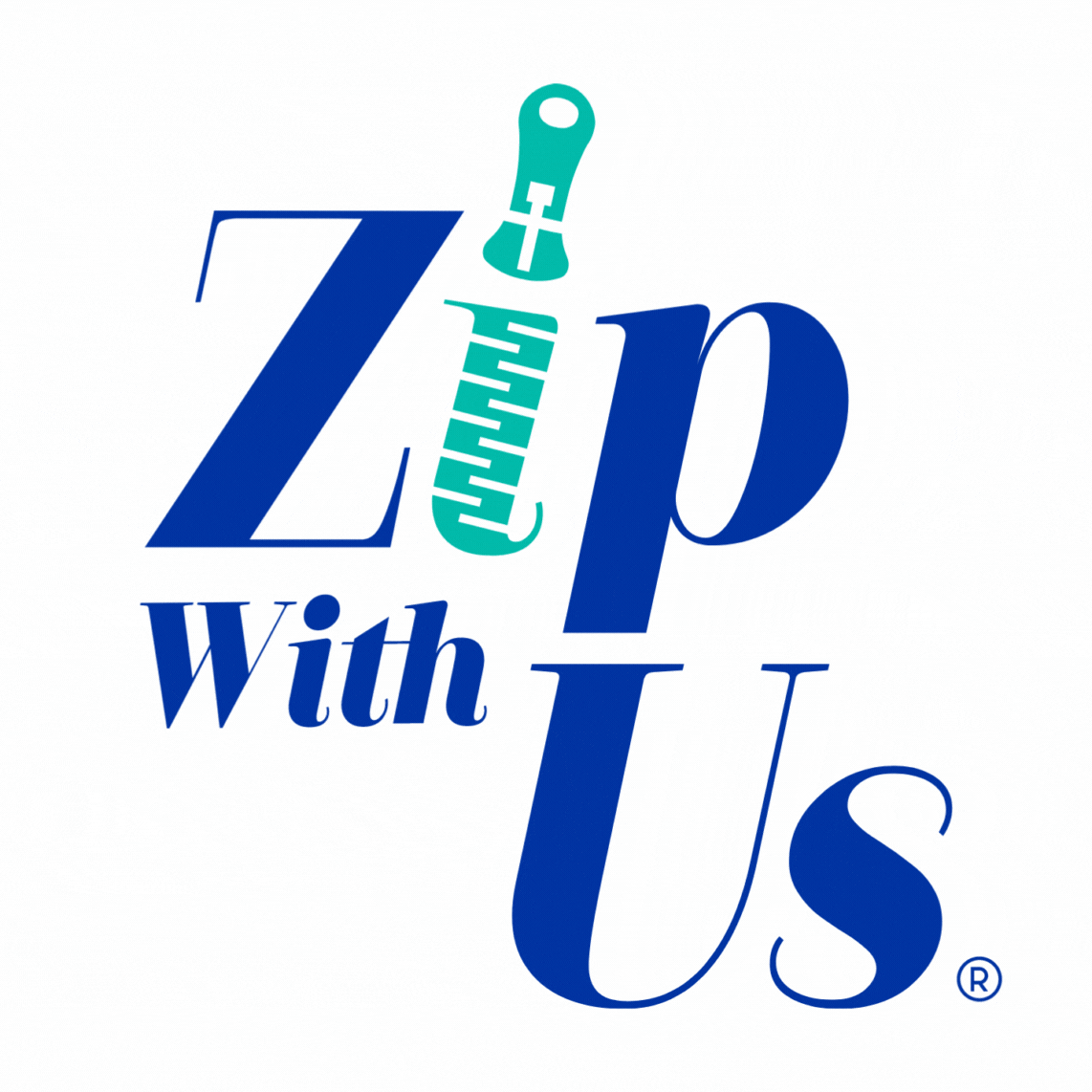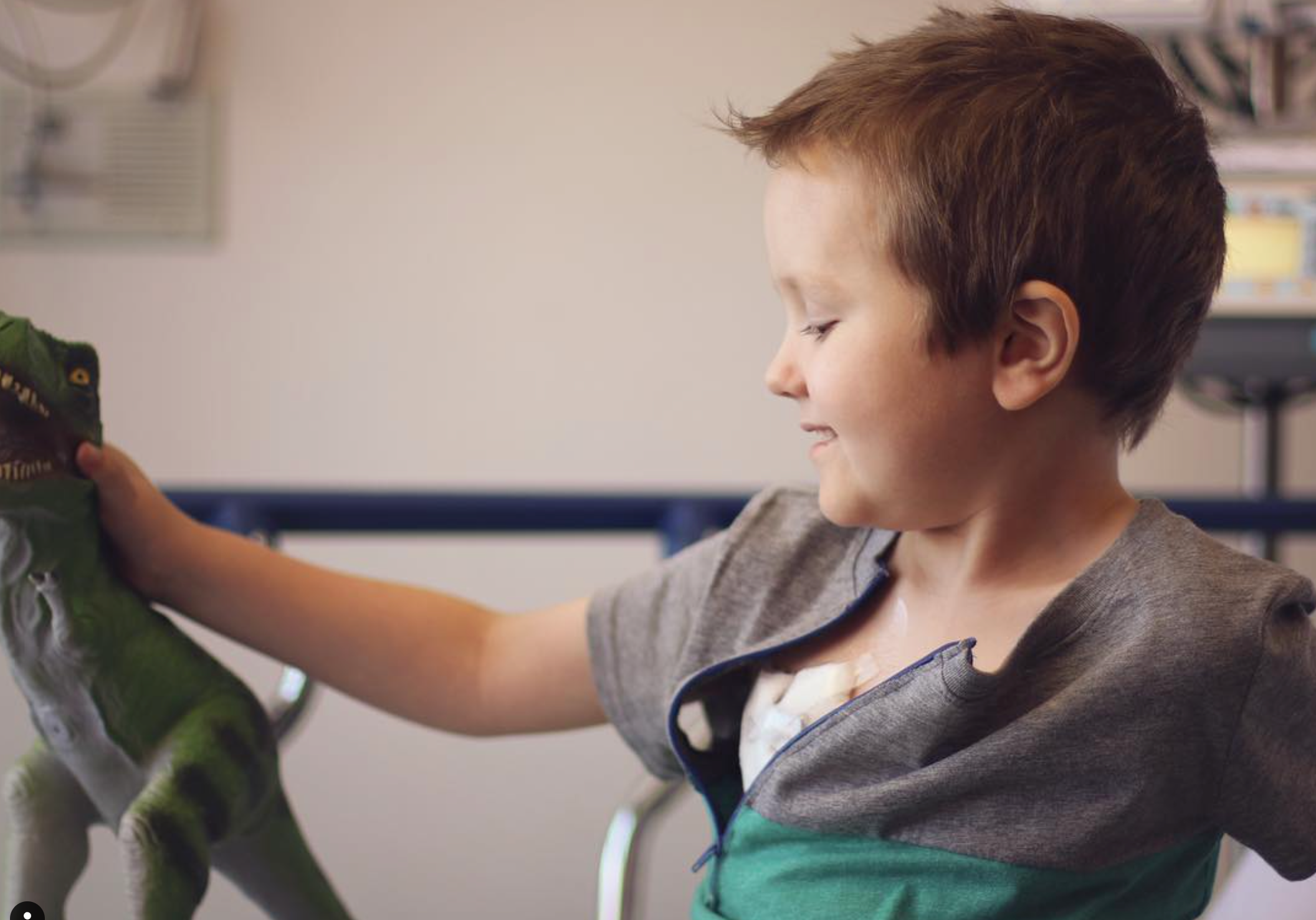Our Story
We founded Zip With Us, Inc. in 2018 after our 2 year old son was diagnosed with Acute Lymphoblastic Leukemia (ALL) while we were on a family vacation. For the next 3.5 years of hospital visits and chemotherapy, he had a "tubie" (i.e. his name for the medi-port device) implanted in his chest for frequent blood draws & infusions. For kids with port devices, hospital staff inserts an approximately 1 inch needle through the skin and into the device, directly in plain sight of the child. This scary and painful experience happens to 87,000 babies and kids every year.
For newly diagnosed patients, the initial days and weeks are filled with a range of emotions dominated by intense anguish, fear and pain. Quickly following comes the nausea, bodily changes, the loss of hair and the awareness of the situation. For parents and caregivers, there's shock, panic, stress, boundless worry, research, reading, phone calls, daily requests for updates from friends and family to respond to, piles of paperwork, insurance, expenses, work, and a deluge of information requiring a completely new language to be learned (for most non-medically trained people).
Amidst those first days of diagnosis, we did not realize that a small, zippered shirt placed on the hospital bed would become an integral part of our life. More importantly, an irreplaceable source of comfort for our little boy in his most challenging and scariest times. It was a simple, green, long-sleeved t-shirt, with a handwritten note from a kind person who sewed the zipper into it by hand from their home. This was someone who had "been there" before. Someone who simply understood what was to come, and how this shirt would make a considerable difference.
The Zipshirt™ would be a familiar feeling, part of a manageable routine for our son, on well over a hundred infusion days and countless impromptu Emergency Room trips. Soon, doctors, nurses, medical staff and other parents were constantly noting "what a great idea" and “what an amazing shirt” he had, while fellow parents were asking where and how they could get one for their child. It was heartbreaking to learn that many hospital staff members, caregivers and families (across the country) hadn't even seen one of these shirts before, and that little kids terrified of needles and teenage girls would have to remove their shirts to receive their life saving medications.
That is the genisis of Zip With Us®. Driven by the reality that these ZipShirts™ are what kids are wearing during the scariest, most uncomfortable and painful moments of their treatment journey. During these times, a child's ZipShirt™ provides comfort, warmth, dignity and a sense of security during the scary, unnerving and necessary port-access process.
Our mission is simple to understand— Provide a free, custom ZipShirt™, Drew's Cruiser™ adapted onesie or other adapted medical garment for every child with cancer or other life-threatening illness with an access device implant in the United States. To make a real difference today in the lives of these pediatric patients and their families, one shirt at a time. We leverage the ZipShirt™ and Drew's Cruisers™ platform as a way of improving the treatment experience, raising research funds for leading pediatric cancer organizations and bringing awareness of the fight that kids and their families face every day.
Everything we do is as a registered non-profit, designated as a 501(c)(3) public charity through the IRS. Through your fundraisers, T-shirt/onesie drives, donations, charitable contributions, and purchasing items from our Store -- we now proudly service over 80 pediatric hospitals across the world with free medical access garments- making a significant difference for thousands of pediatric patients and the families & caregivers alongside them. One ZipShirt™, Drew's Cruisers™ onesie pack or custom medical garment is one child and one family served. It is an incredible honor to have your support-and on behalf of the entire Zip With Us® team, thank you!
Very truly yours,
Angela Degnan, Executive Director
Zip With Us®
Childhood Cancer at a Glance
-
Only 3
drugs approved in the first instance for use in children since 1980.
-
43
Kids will be told "You have Cancer" today.
-
95%
of childhood cancer survivors will have a significant health issue by Age 45.
-
ONLY 4%
of all federal cancer research funding is for childhood cancer. (National Cancer Institute)
-
15,270
kids will be diagnosed with cancer this year in the U.S. (National Cancer Institute)
-
75,000
"port devices" are implanted in kids each year, and over 400,000 will receive "PICC" lines. (iData Research)
The Facts
-
- According to the National Cancer Institute, approximately 15,270 children in the United States will be diagnosed with cancer in 2018 (National Cancer Institute).
- Cancer is the number one cause of death by disease among children (National Cancer Institute).
- More than 40,000 children undergo cancer treatment each year (Curesearch).
-
- The incidence of childhood cancer is on the increase, averaging 0.6% increase per year since mid 1970’s resulting in an overall increase of 24% over the last 40 years (American Cancer Society).
- 1 in 285 children was diagnosed with cancer in 2014 (American Cancer Society).
- Pediatric cancer research (i.e. for childhood cancers) is only 4% of all research dollars spent in the U.S (National Cancer Institute).
-
- In 2017, there were an estimated 75,000 port devices and 400,000 PICC's implanted in children in the United States (as reported by iData Research)
- Childhood cancer is not one disease – there are more than 12 major types of pediatric cancersand over 100 subtypes (CAC2.org)
- Prostate cancer (patient average age at diagnosis, 66 years), receives more research funding from NCI than all childhood cancers combined (patient average age at diagnosis, 8 years). (CAC2.org)


